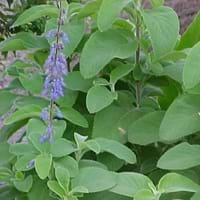Life Span
Perennial
Perennial
Type
Perennial
Flowering Plants, Herbs
Origin
Southeastern United States, North-Central United States, Central United States, South-Central United States, Southwestern United States, Texas, Canada, Mexico
Not Available
Types
Not Available
Not Available
Habitat
Dry areas, Prairies, Rocky areas, rocky outcrops
Not Available
USDA Hardiness Zone
3-10
Not Available
AHS Heat Zone
10-1
Not Available
Sunset Zone
A1, A2, A3, H1, H2, 1a, 1b, 2a, 2b, 3a, 3b, 4, 5, 6, 7, 8, 9, 10, 11, 12, 13, 14, 15, 16, 17, 18, 19, 20, 21, 22, 23, 24
Not Available
Habit
Upright/Erect
Clump-Forming
Flower Color
Yellow, Purple, Burgundy, Light Green, Brown
Lavender
Flower Color Modifier
Bicolor
Bicolor
Fruit Color
Brown
Not Available
Leaf Color in Spring
Light Green, Gray Green
Light Green
Leaf Color in Summer
Light Green, Gray Green
Green
Leaf Color in Fall
Light Green, Gray Green
Green
Leaf Color in Winter
Light Green
Green
Leaf Shape
Subulate
Toothed
Plant Season
Summer
Summer, Fall
Sunlight
Full Sun
Partial shade, Partial Sun
Type of Soil
Loam, Sand
Loam, Moist
The pH of Soil
Neutral
Neutral, Slightly Alkaline
Soil Drainage
Well drained
Well drained
Bloom Time
Late Spring, Early Summer, Summer, Late Summer
Early Summer, Late Summer
Tolerances
Drought
Not Available
Where to Plant?
Ground
Ground
How to Plant?
Seedlings
Cuttings
Plant Maintenance
Medium
Medium
Watering Requirements
Average Water Needs, Water in morning to avoid prompting diseases
Do not water excessively
In Summer
Lots of watering
Ample Water
In Spring
Moderate
Average Water
In Winter
Average Water
Moderate
Soil pH
Neutral
Neutral, Slightly Alkaline
Soil Type
Loam, Sand
Loam, Moist
Soil Drainage Capacity
Well drained
Damp
Sun Exposure
Full Sun
Partial shade, Partial Sun
Pruning
Cut or pinch the stems, Pinch Tips, Remove damaged leaves, Remove dead branches, Remove dead flowers, Remove dead leaves, Remove dead or diseased plant parts, Remove deadheads
Remove damaged leaves, Remove dead leaves
Fertilizers
All-Purpose Liquid Fertilizer, Apply N-P-K
10-10-10 diluted liquid fertilizer, All-Purpose Liquid Fertilizer
Pests and Diseases
Pests and diseases free, Red blotch
Leaf spot, Root knot nematode, Root rot, Verticillium Wilt
Plant Tolerance
Drought, Dry Conditions, Dry soil, Full Sun
Not Available
Flower Petal Number
Single
Single
Foliage Texture
Fine
Fine
Foliage Sheen
Matte
Matte
Attracts
Birds, Butterflies
Not Available
Allergy
Rhinitis
Cough, flushing of face, Low blood pressure, restlessness, stinging, Throat itching, tremor
Aesthetic Uses
Borders
Showy Purposes, Used for making hedges
Beauty Benefits
Not Available
No Beauty Benefits
Environmental Uses
Air purification
Air purification
Medicinal Uses
Analgesic
convulsions, Heart problems, painful urination, spasmodic pain
Part of Plant Used
Flowers
Leaves, Root, Seeds
Other Uses
Can be made into a herbal tea, Used in making tea
Employed in herbal medicine
Used As Indoor Plant
No
No
Used As Outdoor Plant
Yes
Yes
Garden Design
Container, Cutflower, Mixed Border, Wildflower
Container, Mixed Border
Botanical Name
RATIBIDA columnifera
Plectranthus barbatus
Common Name
Mexican Hat
Coleus forskohlii, Indian coleus
In Hindi
Mexican Hat
पत्थरचूर
In German
Mexican Hat
Harfensträucher
In French
Mexican Hat
Coléus à forskoline, Coléus de l'Inde
In Spanish
mexican Hat
Coleus forskohlii
In Greek
Mexican Hat
Coleus Forskohlii
In Portuguese
Mexican Hat
Boldo-de-jardim, Boldo-da-terra
In Polish
Mexican Hat
Coleus Forskohlii
In Latin
Mexicanus Hat
Coleus Forskohlii
Phylum
Tracheophyta
Magnoliophyta
Class
Magnoliopsida
Magnoliopsida
Family
Asteraceae
Lamiaceae
Clade
Angiosperms, Asterids, Eudicots
Angiosperms, Asterids, Eudicots
Tribe
Not Available
Not Available
Subfamily
Not Available
Not Available
Number of Species
Not Available
Not Available
Importance of Mexican Hat and Coleus Forskohlii
Want to have the most appropriate plant for your garden? You might want to know the importance of Mexican Hat and Coleus Forskohlii. Basically, these two plants vary in many aspects. Compare Mexican Hat and Coleus Forskohlii as they differ in many characteristics such as their life, care, benefits, facts, etc. Every gardener must at least have the slightest clue about the plants he wants to plant in his garden. Compare their benefits, which differ in many ways like facts and uses. The medicinal use of Mexican Hat is Analgesic whereas of Coleus Forskohlii is convulsions, Heart problems, painful urination and spasmodic pain. Mexican Hat has beauty benefits as follows: Not Available while Coleus Forskohlii has beauty benefits as follows: Not Available.
Compare Facts of Mexican Hat vs Coleus Forskohlii
How to choose the best garden plant for your garden depending upon its facts? Here garden plant comparison will help you to solve this query. Compare the facts of Mexican Hat vs Coleus Forskohlii and know which one to choose. As garden plants have benefits and other uses, allergy is also a major drawback of plants for some people. Allergic reactions of Mexican Hat are Rhinitis whereas of Coleus Forskohlii have Cough, flushing of face, Low blood pressure, restlessness, stinging, Throat itching and tremor respectively. Having a fruit bearing plant in your garden can be a plus point of your garden. Mexican Hat has no showy fruits and Coleus Forskohlii has no showy fruits. Also Mexican Hat is not flowering and Coleus Forskohlii is flowering. You can compare Mexican Hat and Coleus Forskohlii facts and facts of other plants too.





